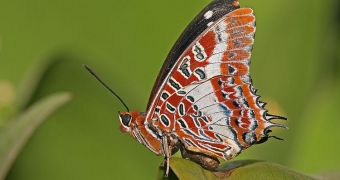According to a new scientific study, the best possible ecosystems that could promote the conservation and recovery of endangered butterfly species are rugged, hilly landscapes that contain numerous and various types of habitats. These conclusions are based on data collected from the UK Land Cover Map data, a collection of information sets gathered via satellite. Details of this investigation appear in the February issue of the respected scientific journal Ecology Letters.
Scientists from the Center for Ecology & Hydrology, the Butterfly Conservation group, and the University of York, all in the United Kingdom, were interested in learning how to best conserve these species, some of which had only a few thousand members remaining, and were therefore classified as endangered or severely threatened. The new work also carries considerable implications for other types of conservation efforts as well, as the expertise gathered while analyzing these satellite data could easily be put to work when it comes to designing better ecosystems for other types of animals as well.
“Our findings show that more diverse landscapes may provide a greater range of resources and microclimates, which can buffer insect populations from declines in difficult years,” expert, Dr. Jane Hill, who has also been a coauthor of the new paper, explains. She is based at the University of York Department of Biology. “More stable insect populations are better for conservation because it means that, in years with extreme weather (e.g. drought years), populations are less likely to go extinct. Our research shows that populations of species such as the Brown Argus and Dingy Skipper butterfly are more stable when they are located in hilly landscapes with a range of habitat types,” Center for Ecology & Hydrology expert, Dr. Tom Oliver, who has also been the lead author of the research, adds.
“With a rapidly changing climate we need our landscapes to support biodiversity as well as provide other ecosystem services such as food production and clean water. Using remotely-sensed land cover data from satellites to design landscapes may help us to achieve the right balance,” Dr. David Roy, a coauthor of the study and an expert at the CEH, says. The new investigation focused on butterfly records spanning more than 11 years, and took into account population variations recorded for up to five kilometers in each direction from the targeted study sites. Results show that it is precisely the multitude of habitats in hilly terrains that promotes the insect development, as species can move from one to the other whenever conditions in one habitat become unbearable.

 14 DAY TRIAL //
14 DAY TRIAL //